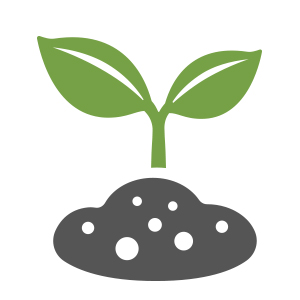Fertilizer FAQs
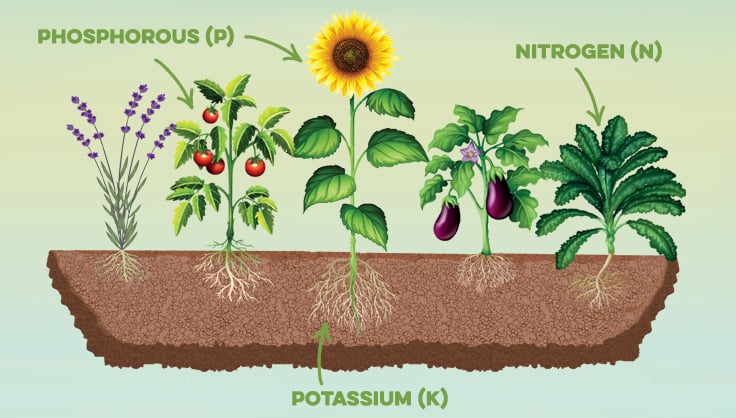
Why fertilize?
Fertilizer improves plant growth, bloom production, fruit set, and overall plant health. However, there are seemingly endless options for organic and chemicallysourced fertilizers—and it can be very confusing to make the right choice.
The first step is to understand the purpose of fertilizing, the differences in fertilizer type, and the major nutrients that make up fertilizer: nitrogen, phosphorus, and potassium. The second is to understand that different plants require feeding at different times of the year. Read on to learn more so you can select the right products and grow the most productive plants.
Should I use a natural or chemical fertilizer?
Natural fertilizers should be used whenever possible: they stimulate plant growth, produce large yields, and improve soil health significantly without harming the environment or ecosystem. They are also often derived from renewable resources and longer-term have more positive results than chemical fertilizers.
Chemical fertilizers are often petroleum-based and are used heavily in most modern agricultural settings. They can be highly potent and are frequently overused—causing harm to plants and the environment. Beneficial soil microorganisms die when synthetic fertilizers are applied, plus these fertilizers often enter waterways contributing to water pollution.
What’s best... a liquid, soluble, granular, or foliar fertilizer?
The type of fertilizer you use will depend largely on how frequently you're planning to apply it.
Types of Organic Fertilizer
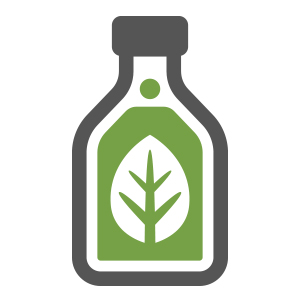
Liquid Fertilizer
Q. What's a liquid fertilizer and why would I use it?
A. Liquid fertilizers are typically concentrated, diluted with water, and applied with a watering can at the plant’s root-zone. Results are visible within a few weeks of application. The disadvantage of liquid fertilizers are their rapid filtration through the soil and, when used outdoors, their quick leaching as a result of rainfall. Therefore, liquid fertilizers need to be reapplied at a regular schedule, generally every two weeks.
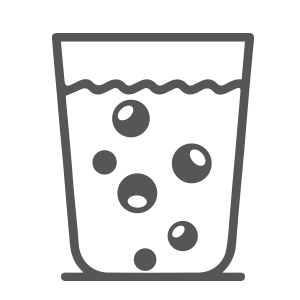
Soluble Fertilizers
Q. What's a soluble fertilizer and why would I use it?
A. Soluble fertilizers appear as fine crystals which dissolve in water and are applied to the plant roots. These are like liquid fertilizers in their quick availability to plants however, they also need to be applied frequently.
Granular Fertilizer
Q. What's granular fertilizer and how is it used?
A. Granular fertilizers are applied by hand or with spreader. These can be pure products or blends of different sources. Examples include bone meal, blood meal, or blends such as Gardener’s Best® Flower Fertilizer.
Granular fertilizers release slowly into the soil, which means the fertilizer is present longer. However, they also take a little longer to become available as nutrients, so it will take longer for noticeable results. Application is needed less often than liquid or soluble fertilizers, approximately every 3-4 weeks. Granular fertilizers are also easy to apply—mix into soil when planting or scratch into the soil surface and water them in.
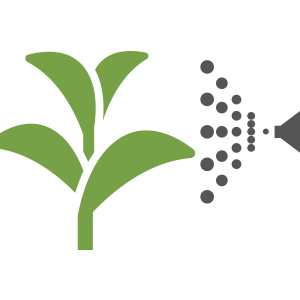
Foliar Fertilizers
Q. What's a foliar fertilizer and how do I use it?
A. Foliar fertilizers are diluted and applied to plant foliage with a sprayer. The nutrients are absorbed through the leaves and quickly allocated towards specific growth. The type of fertilizer applied determines the plant growth so understanding the major nutrients and their effects on plant growth will help to select the correct fertilizer.
What are the major components of fertilizer?
The major components are three primary nutrients: nitrogen, phosphorus, and potassium, also referred to as N-P-K. They are represented as a set of three numbers indicating their content ratios of. For example, they may be shown as “5-7-4.”
The first number, 5, is nitrogen (N). The second, 7, is phosphorus (P) and the last, 4, is potassium (K). On all fertilizer products, the nutrients are arranged in this order, nitrogen, phosphorus, and potassium, so that we can quickly decide what type of growth and/or development we want to encourage.

Nitrogen
Q. How important is Nitrogen for plants?
A. Nitrogen is an essential nutrient that is not readily available in nature to plants. It absorbs quickly and is also quickly lost through watering. A plant with adequate nitrogen grows upwards and outwards producing lush green leafy growth. A plant deficient in nitrogen exhibits solid yellow leaves.
Organic sources of nitrogen are blood meal and cottonseed meal. These are slow-release options that feed the plant and build the soil as they decompose. A faster acting option is liquid fish emulsion which a plant can quickly take up through its roots.

Phosphorus (P)
Q. Why is Phosphorus important to plants?
A. Phosphorus promotes root growth as well as flower and fruit production. In the 5-7-4 example noted earlier, the ratio of phosphorus (the second number) is higher than nitrogen (the first number). With this fertilizer, a plant will develop more flowers rather than leaves. For annuals which have a short growing season, providing more energy towards blooms rewards us with abundant flowers throughout the summer into fall. However, it is important to know that phosphorus takes longer to break down and be absorbed. If used incorrectly, phosphorous can build up in the soil and cause water pollution so be mindful of application near bodies of water.
Plants deficient in phosphorus appear dark purple at tip of leaf and along edges into margins or veins.
Organic sources of phosphorus are bone meal and rock phosphate. When planting bulbs in the fall, adding bone meal encourages healthy roots and development of large strong blooms in the spring.
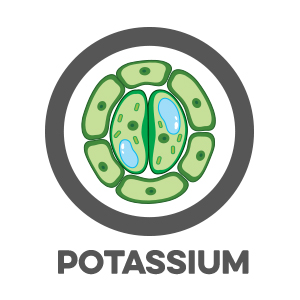
Potassium (K)
Q. What does Potassium do for plants?
A. Potassium helps a plant develop strong cell structure and overall health. It aids disease and stress resistance and in a sense helps plants develop a strong immune system. Often a fertilizer higher in potassium is applied to seedlings or transplants to encourage strong development and future healthy growth. Potassium deficiencies are similar to nitrogen deficiencies however discoloration appears at the edge of the leaf.
Organic sources of potassium are kelp meal and greensand which is mined from ancient lake beds and provides glauconite.
What should I fertilize my plants with and when?
| Spring | Summer | Fall | Winter | |
| Perennials | ✓ | ✓ Liquid, High Phosphorous while in bloom |
✓ | |
| Shrubs | ✓ | ✓ Fertilize in Early Fall before plants are dormant |
||
| Vegetables | ✓ Granular every 3-4 Wks or Liquid every 10-14 days |
✓ | ||
| Annual Flowers | ✓ High Phosphorous (5-10-5) throughout the season |
✓ | ||
| Blooming Houseplants | ✓ | ✓ | ✓ | Avoid winter fertilizing |
| Leafy Houseplants | ✓ Balanced NPK (5-5-5)* |
✓ | ✓ | Avoid winter fertilizing |
Specific plants require different fertilizers at various times of the year.
Perennials
Perennials bloom at specific times of the year with occasional reblooming if cared for properly with pruning and/or fertilizing. In general, fertilize perennials in the spring as they are awakening from dormancy and then again in the fall to store energy before their rest period. For a quick boost while in flower, apply a liquid fertilizer high in phosphorus for longer, stronger blooms.
Shrubs
Shrubs are also best fertilized in the spring and sometimes again in the fall. It is important to avoid fertilizing too late into the fall, as feeding can stimulate growth when the plant should be heading into dormancy. If applied too late, fertilizer is also wasted as the plant will not actively absorb the nutrients when dormant.
Houseplants
Houseplants should be fertilized in their active growing season, generally spring through fall. Select a fertilizer that encourages certain growth such as bloom booster with a high phosphorus ratio such as 5-10-5 for flowering houseplants or a balanced type such as 5-5-5 for foliage plants. In winter, houseplant growth slows because daylight hours are shorter. Fertilizing in winter can sometimes result in weak, spindly growth as a plant will reach for light it cannot acquire.
Vegetables
Veggies are heavy feeders and need to be fertilized regularly. Whether you choose a liquid or granular fertilizer depends on how often you’re comfortable feeding and the ease in application. Apply a slow-release granular fertilizer when first planting in the spring and reapply about every 3-4 weeks. If the season is especially rainy, where nutrient loss is higher or plants appear to need an additional boost, apply a natural liquid solution for quicker absorption and fast results. You can also choose to only apply liquid fertilizer but remember that application is needed more often, about every 10 days to 2 weeks.
Flowers
Flowers, especially annuals, are also heavy feeders especially as the season is short and we tend to want as many blooms as possible for the best show. To meet this need, use a high-phosphorus fertilizer in containers throughout the entire growing season. *For in-ground plants near bodies of water, consider using a balanced 5-5-5 fertilizer to avoid phosphorous runoff inter water systems.
Still have questions?
Ask your local garden center for advice so that you can be sure you’re choosing the best option for your particular plants and conditions. It can also help to get your garden soil tested for any deficiencies or an over abundance of a particular nutrient. Soil test kits can be purchased at most garden centers and are easy to use. If a more in-depth analysis is needed many university agricultural extension services can provides this service at a reasonable price.
Last updated: 12/12/2022
Print this Article:
Related Articles
Get the Dirt
Stay up to date on new articles and advice. Please fill out the information below.


